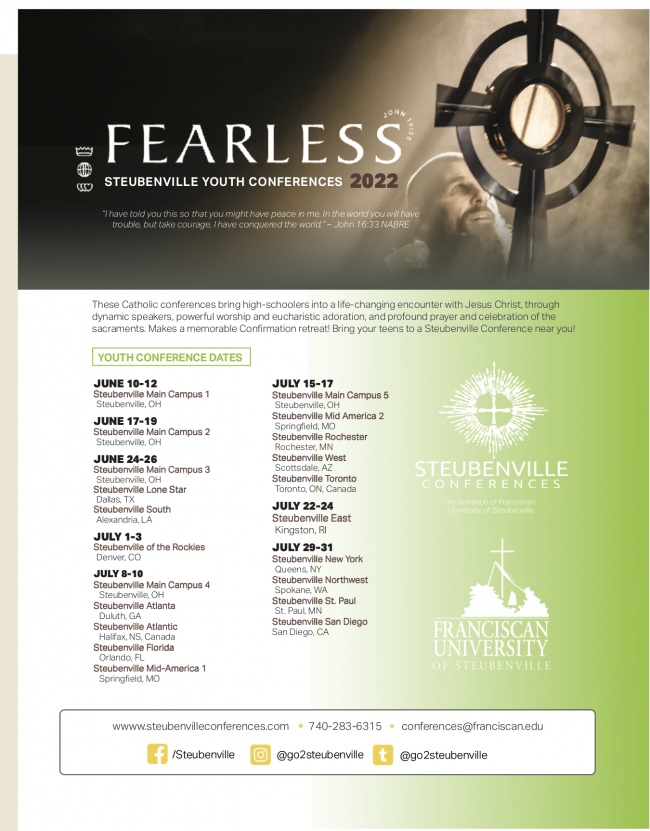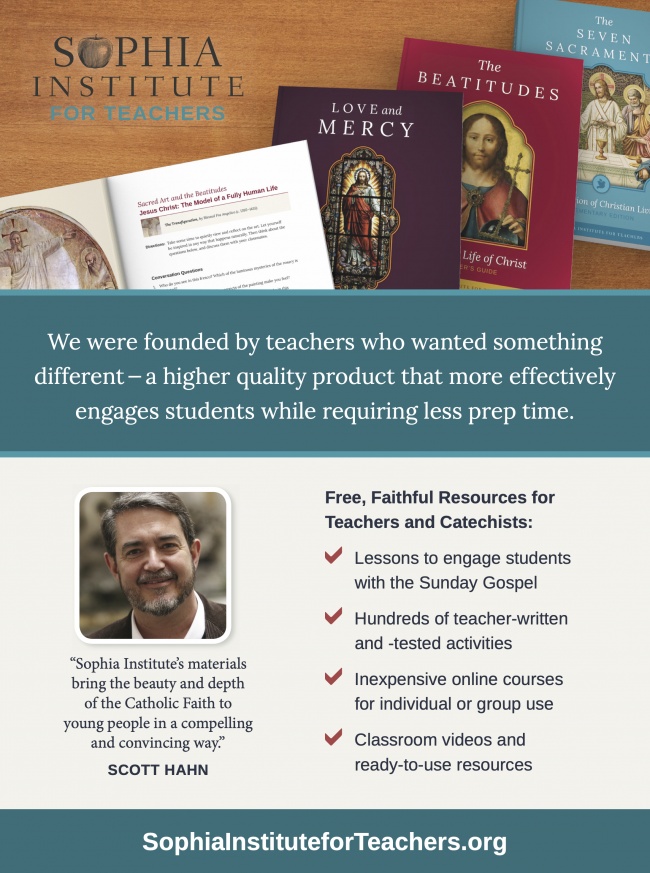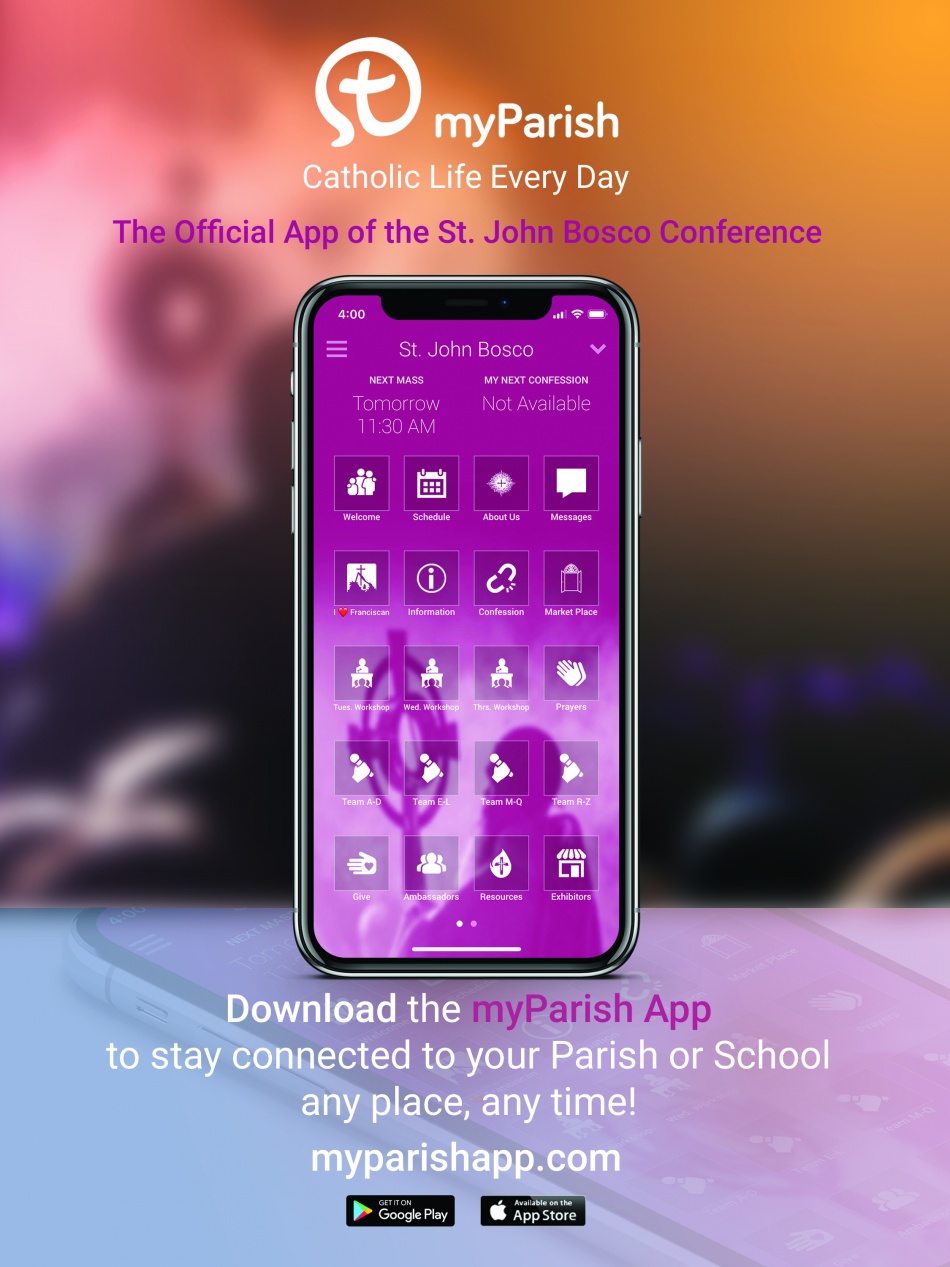Catechizing Children of Divorce: A Reflection
In the United States, approximately “1,000,000 children a year experience their parents’ divorce.”[i] This is a staggering statistic, and it does not account for children whose parents are still married but separated, or who were cohabiting and have gone their separate ways. As catechists, it is certain that we will minister to people from broken families, if we have not done so already. As we encounter these people, we may find ourselves asking whether the experience of parental divorce impacts the faith of children of divorce.[ii] And if so, how can we as catechists respond to their needs? As a child of divorced parents, I have been pondering both of these questions for some time. In sharing my reflections, I am inviting you to ponder these questions with me in order to discern what answers the Holy Spirit leads you to in your particular ministry.
Before going further, I want to clarify that I am not condemning parents who divorce. Divorce is painful for everyone involved and parents never intend for their divorce to negatively impact their children. The hard truth is that it does. Through personal experience and research, I have learned that divorce can affect one’s faith profoundly.
A helpful analogy for understanding the impact of divorce is that of a culture. Children of divorce experience a different “culture” than people from intact families. Addressing the issues arising from parental divorce catechetically involves a process of inculturation. In this process, the threefold catechumenal model—with its pastoral, liturgical, and catechetical aspects—provides a helpful framework for addressing the needs of children of divorce.
[i] “The Need,” LifeGivingWounds.org, 2021, https://www.lifegivingwounds.org/the-need.
[ii] For my purposes, the term “children of divorce” refers to people whose parents have divorced, are separated but still married, or had been cohabiting and are now separated. In this context, “children” of divorce refers to all age groups, because study has shown that experience of one’s parents’ divorce has a profound impact even into the adult years.
AD: FEARLESS! 2022 Steubenville Youth Conferences Schedule
For more information on the 2022 Steubenville Youth Conferences, go online at www.steubenvilleconferences.com or call 1-740-283-6315.

Catholic Schools: Creating a Tender Place for the Human Soul to Flourish – Building an Acts 2:42 Community
On the first full day of school, I found myself energized about the opportunities and enthusiasm that filled our hallways. I had visions of beautiful moments for our community as we were able to be a bit more “normal” after a tough year of COVID and quarantines. That evening, however, just before falling asleep, I received a phone call that one of our junior students had been involved in a fatal car accident. My heart plummeted as the text messages began to blow up my phone. Shock and grief were sweeping through our school families as the news spread and hearts broke.
Simultaneously, though, a beautiful phenomenon began to emerge. Our nearby parishes were inundated with teenagers flocking to adoration chapels. Parents were accompanying their kids as they knelt together in front of the Blessed Sacrament, praying rosaries and chaplets while holding each other up. They were on their knees before the Lord and their hearts were being nurtured by Christ himself. I was comforted to know that in this time of tragedy, a communal muscle memory kicked in, and we lived as a people rooted in Acts 2:42, “They devoted themselves to the teaching of the apostles and to the communal life, to the breaking of the bread and to the prayers.”
I have served on senior leadership teams at a parish, a camp, and a school that have each used the Acts 2:42 template to create dynamic Catholic communities. Community flows out of the core human desire to be known and loved. Blake Mulvaney, our former superintendent, would say each year, “Every student has one question on the first day of school: will my teacher care to know me and love me?” Whether at a parish, camp, or in a school, each staff member is needed to create an Acts 2:42 culture.
Children's Catechesis: Offering to Children the Gift of Prayer
“Prayer is first of all a gift from God; in fact, in every one of the baptized, ‘the Spirit himself intercedes for us with sighs too deep for words’ (Rom 8:26).” [1]
Our habit as Catholics is to begin our prayers with the Sign of the Cross—itself a gift we’ve received from Christ and the Church. By this ancient sign, we ground our prayer in the Holy Trinity, who was revealed to us in the person of Jesus Christ.
Because prayer is a gift, our work as catechists isn’t so much to teach children their prayers as it is to help them discover for themselves the gift of prayer and how they can receive it more fully.
Sofia Cavalletti, catechist and co-founder of Catechesis of the Good Shepherd, cautions that adults ought not “impose our own prayer guidelines on children. We risk leading them on a path that is not theirs. We risk extinguishing the spontaneous expression of their relationship with God and give rise to the idea that when we pray, we say certain fixed things, without necessarily adhering to them within ourselves. We could separate prayer from life in children.”[2]
Ms. Cavalletti identifies a problem I have observed in my interactions with Catholic school children through the years. Having memorized their prayers and attended liturgies without having encountered Jesus Christ as the incarnation of God’s intimate love for them, they often perceive prayer, indeed the entire subject of religion, as boring. In my experience, this contrasts with the openness of the children in our parish religious education programs who come with little or no instruction on prayer. They are more likely to be curious about who Jesus is and how they can know him.
Notes
[1] Pontifical Council for the Promotion of the New Evangelization, Directory for Catechesis (Washington, DC: USCCB, 2020), 86.
[2] Sofia Cavalletti, The Religious Potential of the Child (Oak Park, IL: Archdiocese of Chicago, Liturgy Training Publications, 1992), 120 (emphasis mine).
Favorable Dynamics for Catechizing Boys
A few years ago, I had the opportunity to give a catechetical instruction to the seventh- and eighth-grade boys of my parish. Now, I was the Homiletics professor at Sacred Heart Major Seminary and instructor of several other courses offered by the Seminary. My style of teaching leaned more toward following a carefully ordered outline for my presentation, after which I would elicit questions and provide time for discussion.
These eight boys, however, were active and undisciplined, and in no condition to listen to a lecture. Intuitively, I immediately changed my style of teaching to a lively and very animated one. I weaved in some stories and involved them in reading some texts. The change in style helped, but their response to the lesson was still rather tepid. Then something unexpected happened.
I posed a question to them as to how they would try to preach the Gospel to young people in today’s world. As soon as I presented to them a challenge, a specific situation to resolve based upon what they had heard and learned, their interest went way up. I served as a guide and kind of coach for keeping them on track in the discussion. Suddenly, I was hearing creative ideas, strong opinions, and some boys challenging the other boys. The class came alive, and a new mode of teaching the boys emerged.
AD: Sophia Institute for Teachers: Free, Faithful Resources
This is a paid advertisement in the October-December 2021 issue. Advertisements should not be viewed as endorsements from the publisher. To contact Sophia Institute click here. Or call 1-800-888-9344. Let them know you saw the ad here.

Children’s Catechesis: Educating in Christ – A Classroom Adaptation of the Work of Sofia Cavalletti
In September, 2018, I received a bemusing phone call from Anthony Gordon, the director of Catholic schools in a rural Australian Diocese. He asked me whether I would consider applying for the position of Diocesan Director of Religious Education and Mission. At the time, I was working in my “dream job” as a professor of religious education at the University of Notre Dame in Sydney, Australia. I had just completed the book that, I thought, summed up everything I had learned as a parent, teacher, catechist, and college professor through forty years of professional life, and I was ready to retire. The suggestion that I should change course at that stage of life was preposterous! The diocese in question, Wilcannia-Forbes, was the size of Texas and its eighteen schools, for the most part, could only be reached by long and lonely driving. I thanked the director for his confidence in me and then told him that it was not really what I wanted to do at this point in my life.
Yet, almost from that moment, I could not think of anything else. Was this a call from God? Was I being asked to put what I had learned into practice in this very challenging environment? I pondered it for a couple of weeks, and then decided to visit and pray at the grave of Australia’s (so far) only saint. St. Mary Mackillop had founded an order of religious sisters whose purpose was to bring the Gospel to the people of isolated communities. After this, with complete serenity, I knew what I had to do. With one day to go, I applied for and was appointed to the position.
Catholic Schools: The Incarnation – A Model of Perfect Inculturation
There have been many moments where, although I’m still relatively young, I have felt generations older than the students that I teach. Moments where I use a # next to a number and they get confused because they think it’s a social media hashtag. Moments where they teach me what words like “simp” and “sus” mean because I have never heard of them. Moments where I have to do a web search for what a VSCO Girl is because they keep saying it and I don’t want to appear naive. It’s all good fun and keeps me on my toes, but there is also a very real call from the Lord in these moments. As a teacher, Christ remains the model for all of my teaching; thus, I must imitate him in his incarnation.
The Impact of the Incarnation
To say that “the Word became flesh and dwelt among us” (Jn 1:14) carries great weight, particularly to an educator. The wonder of the Incarnation should impact every Catholic—the fact that God humbled himself to become like his lowly creation is an act of pure love that should astound us and draw us to love him more—but there is an even deeper calling for those of us working in the vineyard. We must imitate the example of inculturation that Jesus shows through the Incarnation. In this way, we are able to meet our students where they are, just as God met humanity by assuming our human nature and being born into the world in the same manner that every other human does. A mystery as infinitely great as God is not so easily comprehended by the human mind. By assuming our human nature, Jesus walks among us, like us in every way except sin, so that we cannot say that we have a great high priest who does not sympathize with our humanity (c.f. Heb 4:15).
Decolonizing the Curriculum in the Light of the Incarnation
On March 9, 2015, protests erupted among students of the University of Cape Town, South Africa under the slogan #RhodesMustFall. They demanded that the statue of British colonial-era politician and diamond magnate Cecil Rhodes be removed from a prominent place on their campus. The protest was given further impetus internationally by movements such as Black Lives Matter as well as reactions to widespread accusations of institutional racism. In addition to inspiring demands for other statues to be torn down or relocated—from Edward Colson in Bristol, England, to Hannah Duston in New Hampshire—the broader demands of the protest gave birth to an academic movement known as “Decolonizing the Curriculum.”
This term itself is contested and therefore difficult to define. For its supporters, Decolonizing the Curriculum (DtC) entails the balancing and broadening of the academic curriculum in schools and universities from an exclusively Western-centered canon of ideas and texts to include the philosophy, worldviews, and history of other cultures. For its skeptics, it is another front in a seemingly endless culture war, which may threaten to undermine the foundations of Western Christian civilization itself. As one of the most discussed issues in education today, it is timely for us who work in Catholic schools and universities to consider the issue in the light of our faith, despite the risk of controversy. In seeking a balanced way forward, reflection on the wonder of the Incarnation may provide a way out the impasse.
AD: Parish App that Keeps You Connected--Free Download
Stay connected to your parish or school. Download myParishApp here for free.

This is a paid advertisement in the July-September 2021 issue. Advertisements should not be viewed as endorsements from the publisher.


